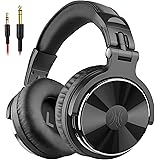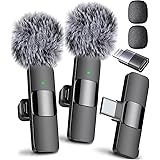To excel in editorial modeling, maintain a strong portfolio and build relationships with industry professionals. Confidence and versatility are crucial.
Editorial modeling requires a unique blend of artistry and professionalism. Models must present a compelling portfolio that showcases versatility in various styles and themes. Building strong relationships with photographers, designers, and other industry professionals can open doors to new opportunities.
Confidence is key; models need to express emotions and narratives through their poses and expressions effectively. Staying updated with the latest fashion trends and honing posing techniques will keep you competitive. Models should also maintain a healthy lifestyle to meet the physical demands of the job. Ultimately, succeeding in editorial modeling involves a combination of talent, hard work, and strategic networking.

Introduction To Editorial Modeling
Editorial modeling is a fascinating niche within the fashion industry. It focuses on creating visually striking images for magazines, advertisements, and other publications. Models in this field need to convey a story or a concept through their poses and expressions. Understanding the basics of editorial modeling can elevate your skills and open new opportunities.
What Is Editorial Modeling?
Editorial modeling involves working on photo shoots for magazines, ad campaigns, and promotional materials. Models often wear high-fashion clothing and accessories. The aim is to create a compelling narrative through visuals. Unlike commercial modeling, which focuses on selling products, editorial modeling is more about artistic expression and storytelling.
Editorial models work closely with photographers, stylists, and makeup artists. They often need to pose in creative and sometimes unusual ways. This type of modeling requires versatility and a strong sense of creativity.
| Aspect | Editorial Modeling | Commercial Modeling |
|---|---|---|
| Focus | Artistic expression | Product sales |
| Clothing | High-fashion | Everyday wear |
| Poses | Creative | Simple |
Importance Of Posing
Posing is crucial in editorial modeling. It helps convey the story or concept of the shoot. A well-executed pose can transform an ordinary photo into a captivating visual. Here are some tips to master posing:
- Practice in front of a mirror to understand your angles.
- Study poses from fashion magazines and try to replicate them.
- Work on your facial expressions to match the mood of the shoot.
- Keep your body relaxed to avoid stiff and unnatural poses.
- Communicate with your photographer to understand their vision.
Each pose should tell a part of the story. Use your body language to add depth and emotion to the image. Remember, the goal is to make the viewer feel something. Whether it’s joy, sadness, or curiosity, your pose should evoke an emotional response.
Basic Posing Techniques
Mastering basic posing techniques can elevate your editorial modeling skills. Whether standing or sitting, the right pose can make or break a photo. Practice these tips to enhance your portfolio and impress clients.
Standing Poses
Standing poses are essential for full-body shots. They highlight your posture and outfit. Try these simple yet effective poses:
- The Contrapposto: Shift your weight to one leg. This creates a natural, relaxed look.
- The Power Pose: Stand tall with shoulders back. This exudes confidence and strength.
- The Lean: Slightly lean against a wall or prop. This adds a casual, effortless vibe.
Sitting Poses
Sitting poses can add variety to your portfolio. They can be elegant or relaxed. Here are a few techniques to try:
- The Cross-Legged: Sit with legs crossed. This creates a relaxed and approachable look.
- The Angle: Sit at an angle to the camera. This adds depth and interest to the shot.
- The Lean-Forward: Lean slightly forward. This engages the viewer and creates intimacy.
Remember, practice makes perfect. Experiment with different poses to find what works best for you. Happy modeling!
Advanced Posing Strategies
Posing is an essential skill in editorial modeling. Advanced posing strategies help create captivating images. These techniques bring life and emotion to photoshoots.
Dynamic Movements
Dynamic movements add energy to your poses. They make photos more engaging.
- Twisting the torso: Rotate your upper body slightly.
- Leaning forward: Create depth by moving towards the camera.
- Walking poses: Walk naturally to capture fluid motion.
Use these movements to create a natural flow. They make images more dynamic and interesting.
Utilizing Props
Props can enhance your poses. They add context and interest to the scene.
| Prop | Usage |
|---|---|
| Chair | Sit or lean on it for relaxed poses. |
| Hat | Hold or wear it to add style. |
| Scarf | Use it to create movement in the shot. |
Props can be used creatively. They help tell a story in your photos.

Facial Expressions
Facial expressions are crucial in editorial modeling. They convey emotions and tell a story. Mastering facial expressions can elevate your modeling career.
Conveying Emotions
Emotions make photos come alive. To convey emotions, practice in front of a mirror. Try different expressions like happiness, sadness, and surprise.
Use your eyebrows to show intensity. Raise them to express surprise. Lower them to show anger or seriousness. Keep your mouth relaxed. A slight smile can show calmness. A wide smile radiates joy.
Practice subtle expressions too. A gentle smirk can express confidence. A slight frown can show concern. Small changes make a big impact.
Eye Contact Tips
Eye contact is powerful in photos. It draws viewers into the image. To master eye contact, focus on the camera lens. Imagine you are looking at a person you know.
Keep your eyes relaxed. Avoid staring too hard. Blinking can ruin a shot. Practice holding your gaze steady.
Use your eyes to express emotion. Soft eyes can show tenderness. Wide eyes can express excitement or fear. The direction of your gaze matters too. Looking straight at the camera is engaging. Looking away can create mystery.
Here are some tips for eye contact:
- Relax your eyes and avoid strain.
- Focus on the camera lens.
- Practice different eye movements.
- Use your eyes to express various emotions.
Mastering these tips will enhance your modeling skills. You’ll create captivating images that tell a story.
Body Language
Body language is crucial in editorial modeling. It helps convey emotions and stories. Mastering body language can make your photos stand out.
Creating Angles
Angles can create dynamic and interesting photos. Experiment with different angles to find your best look.
- Turn your body slightly to the side.
- Tilt your head for a softer look.
- Bend one knee to add depth to your pose.
- Shift your weight to one leg for a natural stance.
Use a mirror to practice these angles. Feel comfortable and confident in your poses.
Using Your Hands
Hands can add expression to your photos. They can enhance your storytelling.
- Place a hand gently on your face.
- Run your fingers through your hair.
- Hold an object to interact with your environment.
- Let your hands rest naturally by your sides.
Make sure your hands are relaxed. Avoid stiff or awkward positions.
| Tip | Details |
|---|---|
| Hand Placement | Keep hands relaxed and natural. |
| Finger Positions | Avoid clenching your fists. |
| Interaction | Use hands to engage with props. |
Practice using your hands in different ways. This will make your poses versatile and engaging.

Working With The Photographer
Working with a photographer is crucial in editorial modeling. Your collaboration can make or break a photo shoot. This section provides essential tips on how to work effectively with photographers.
Building Rapport
Building rapport with your photographer is very important. A good relationship can lead to better photos. Here are some tips:
- Communicate openly: Talk about your expectations and listen to theirs.
- Be punctual: Arrive on time to show respect for their schedule.
- Show enthusiasm: A positive attitude can be contagious.
These steps help create a comfortable working environment. The more comfortable you are, the better the photos will be.
Following Directions
Following directions is another key aspect. Photographers often have a vision for the shoot. Here’s how you can follow directions effectively:
- Pay attention: Listen carefully to what they say.
- Ask questions: If something is unclear, ask for clarification.
- Practice poses: Be ready to try different angles and expressions.
Following these tips ensures a smooth photo session. It also shows that you are professional and easy to work with.
In summary, working well with your photographer involves building rapport and following directions. These tips help you succeed in editorial modeling.
Wardrobe And Styling
Wardrobe and styling are crucial in editorial modeling. The right outfit and accessories can elevate a photo shoot. Attention to detail makes the model stand out. Let’s explore some key tips for wardrobe and styling in editorial modeling.
Choosing Outfits
Choosing the right outfit is vital. The outfit should match the theme of the shoot. It should also complement the model’s body type.
- Understand the theme: Know the concept of the shoot.
- Fit matters: Ensure the outfit fits the model well.
- Color coordination: Choose colors that complement the model.
- Comfort: The model should feel comfortable in the outfit.
Having a variety of options is a good idea. This allows for flexibility during the shoot.
Accessorizing Effectively
Accessories can make or break an outfit. They add a finishing touch and bring the look together.
| Accessory | Purpose |
|---|---|
| Jewelry | Adds sparkle and elegance |
| Belts | Defines the waist |
| Scarves | Adds color and texture |
| Hats | Creates a statement |
Keep accessories minimal to avoid overpowering the outfit. Choose pieces that enhance the look.
In editorial modeling, wardrobe and styling are key. They help create stunning visuals. Paying attention to outfits and accessories ensures a successful shoot.
Common Mistakes To Avoid
Editorial modeling is a dynamic field, requiring precision and creativity. While striving for the perfect shot, models often make common mistakes. These errors can detract from the overall quality of the shoot. Avoiding these pitfalls can significantly enhance the final outcome.
Overposing
One prevalent mistake is overposing. Models sometimes exaggerate their poses, thinking it will make the shot more striking. This often results in unnatural and stiff images.
To achieve the best results, models should aim for natural poses. They should practice subtlety and authenticity. A relaxed stance often conveys more emotion and depth.
| Common Overposing Signs | Solutions |
|---|---|
| Exaggerated arm movements | Keep arms relaxed and natural |
| Overly arched back | Maintain a comfortable posture |
| Forced facial expressions | Practice subtle expressions |
Ignoring The Background
Another frequent mistake is ignoring the background. A cluttered or distracting background can ruin an otherwise perfect shot. Models should be aware of their surroundings.
To enhance the photo, choose a clean, complementary background. This ensures the model remains the focal point. Simple backgrounds often work best, allowing the model to shine.
- Avoid busy or crowded settings
- Be mindful of colors and patterns
- Choose backgrounds that enhance the subject
By avoiding these common mistakes, models can significantly improve their editorial shoots. Keeping poses natural and being mindful of the background are key. These tips ensure higher quality and more captivating images.
Practice And Preparation
Editorial modeling demands more than just good looks. To excel, you need dedication and consistent practice. Proper preparation can set you apart in this competitive field. Below are essential tips on practicing poses and staying fit.
Rehearsing Poses
Rehearsing poses is crucial for success. Practice different poses daily. Use a full-length mirror to see yourself. This helps you find your best angles. Try holding each pose for at least 10 seconds. This helps build muscle memory.
Consider creating a pose portfolio. This can help you remember your best poses. You can even practice in front of a camera. Review your photos and note areas for improvement.
Here are some tips for effective pose rehearsal:
- Practice poses in different lighting conditions.
- Work on facial expressions that match the pose.
- Use props to add variety to your poses.
- Watch editorial photo shoots for inspiration.
Staying Fit
Staying fit is essential for a model. A fit body enhances your poses. It also helps you endure long photo sessions. Create a fitness routine that includes cardio, strength training, and flexibility exercises.
Here is a simple weekly workout plan:
| Day | Exercise |
|---|---|
| Monday | Cardio (Running or Cycling) |
| Tuesday | Strength Training (Upper Body) |
| Wednesday | Yoga or Pilates |
| Thursday | Cardio (Swimming or Aerobics) |
| Friday | Strength Training (Lower Body) |
| Saturday | Flexibility Exercises (Stretching) |
| Sunday | Rest |
In addition to physical exercises, maintain a balanced diet. Eat plenty of fruits, vegetables, and lean proteins. Stay hydrated by drinking plenty of water. A healthy lifestyle will reflect in your photos.
Frequently Asked Questions
What Is Editorial Modeling?
Editorial modeling focuses on storytelling through images for magazines and advertisements. It emphasizes fashion, emotion, and narrative.
How To Prepare For An Editorial Shoot?
Research the concept, practice poses, and communicate with the team. Bring essentials like outfits, makeup, and confidence.
What Are Key Editorial Modeling Tips?
Know your angles, express emotions, and understand the story. Practice various poses and maintain professionalism on set.
How To Get Noticed In Editorial Modeling?
Build a strong portfolio, network with industry professionals, and use social media. Attend casting calls and auditions.
Conclusion
Mastering editorial modeling requires dedication and practice. Focus on your unique style and work with experienced photographers. Stay updated with industry trends and always be open to learning. With these tips, you can elevate your editorial modeling career. Remember, confidence and creativity are key.
Keep pushing your boundaries and success will follow.





















